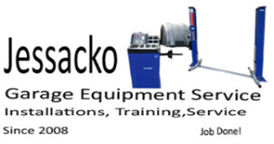Before You Buy A lift.
Which Lift Should I Buy?
A question often asked. Screw type or hydraulic?
Screw lift: A good lift if you buy it new and look after it. I would stay clear from buying a second-hand screw lift. The reasons as follow:
They normally wear on the safety nut as well as the load nut. The spindle (threaded rod) also wear and form a sharp edge. Often when the load-nuts needs to be replaced the engineer would just replace them, the problem is, you are putting a new nut on a old worn thread. (spindle). The ONLY way we would replace worn nuts is to do both nuts, the spindle, top and bottom bearings, chain, and sprockets…. on BOTH posts.
This often cost more than buying a new hydraulic lift.
Hydraulic lifts: Just as safe and reliable as a screw lift, but a lot less maintenance, a lot less to go wrong and if something does go wrong it is always a lot cheaper to repair.
It is up to you, but i will always recommend a hydraulic lift. (20 years experience taught me that).
Make sure of the following:
Installer. How many lifts did the installer himself install….NOT the company. Can he prove it?
If the questions he asks doesn’t start with the following:
- Where do you want the lift?
- Will there be a toolbox or workbench in front of the lift? (normally against the wall)
- What is the longest and highest vehicle you normally work on?
If they don’t ask these questions which may sound pity, the installation can easily go wrong. You will find this out once you start using the lift.
Quality:
Is the lift CE approved? This is VERY important….PLEASE INSIST on proof and a copy of the CE Certificate. There are many cheap and inferior lifts which could cause accidents, breakdowns or expensive repairs. Remember a fatal accident is treated as manslaughter.
Concrete Floor:
Most two post and four post lifts require four – eight inches (150 – 300mm) of concrete with at least 3,000 lb. PSI strength.
Door width and height:
Some lifts are per-assembled before delivery. Make sure your workshop doors are high and wide enough before
delivery.
Ceiling Height:
Check the ceiling height of your area to make sure it is adequate for installation of your new lift.
Delivery:
Can a truck get to your unloading area?
Do you need to get a forklift, or do the supplier provide one for offloading?
Installation:
If you bought an overhead / clear-floor lift. Do you have to supply scaffolding?
Electrical:
Please review the voltage requirements of your lift. Please make sure your building has the correct power source.
Oil:
Does your supplier supply the hydraulic oil? Depending on which lift you buy you would need about 10lt of hydraulic oil. If they don’t supply this, please get some before the installation date.
After The Installation:
- Do you get an installation certificate? Your insurance may insist on one.
- Do they offer training, or explain how you should use the lift in a safe manner?
- Do they explain the maintenance you need to do on the lift?
- Do they explain the need, use and record keeping of checklists?
- After sale service – If you need them how long would they take to respond?
- Spares. Do they keep stock on hand, or do they have to order, or do they have to import the parts first?
Please feel free to contact us with any questions. Our advice is always free and you don’t have to be one of our clients. Our motto is JOB DONE! that is the way we believe it should be. Do it once, do it right.
